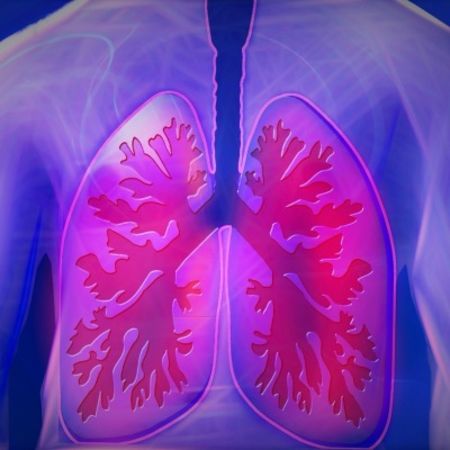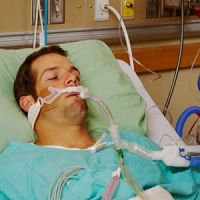Adjusting positive end-expiratory pressure (PEEP) to offset pleural pressure might attenuate lung injury and improve patient outcomes in acute respiratory distress syndrome (ARDS). Researchers conducted a multicentre randomised clinical trial to determine whether PEEP titration guided by oesophageal pressure (PES), an estimate of pleural pressure, was more effective than empirical high PEEP-fraction of inspired oxygen (FiO2) in moderate to severe ARDS.
In this randomised trial (“EPVent-2”) that included 200 patients, PEEP titration guided by PES measurement, compared with empirical high PEEP-FiO2 titration, resulted in no significant difference in death and days free from mechanical ventilation. These findings published in JAMA do not support the use of PES-guided PEEP titration, instead of an empirical high PEEP-FiO2 strategy, in patients with moderate to severe ARDS.
Airway pressure alone may be insufficient to guide lung-protective PEEP titration in ARDS. The chest wall and abdomen contribute unpredictably to pleural pressure and respiratory system mechanics in the critically ill. Distinguishing lung from chest wall mechanics requires considering transpulmonary pressure (PL = airway pressure minus pleural pressure), the pressure difference across the lung. Airway pressure is measured readily by modern ventilators, while pleural pressure can be estimated via oesophageal manometry using a balloon catheter positioned in the midthoracic oesophagus.
In a prior single-centre randomised trial (“EPVent”), PES-guided PEEP titration was compared with the ARDS Network PEEP–fraction of inspired oxygen (FiO2) table. In that trial, PES-guided PEEP was associated with higher PaO2:FiO2, higher respiratory system compliance, and improved adjusted survival. However, EPVent was conducted at a single centre, enrolling patients of any ARDS severity and using a control strategy with lower PEEP than used in some recent trials.
The EPVent-2 trial aimed to test the hypothesis that adjusting PEEP to achieve a non-negative PL is more effective than management using an empirical high PEEP-FiO2 table. EPVent-2 was conducted at 14 hospitals in North America, enrolling 200 mechanically ventilated patients aged 16 years and older with moderate to severe ARDS (Pao2:Fio2 ≤200 mm Hg) between October 2012 and September 2017. Long-term follow-up was completed 30 July 2018.
Study participants were randomised to PES-guided PEEP (n = 102) or empirical high PEEP-Fio2 (n = 98). All participants received low tidal volumes. The primary outcome was a ranked composite score incorporating death and days free from mechanical ventilation among survivors through day 28. Prespecified secondary outcomes included 28-day mortality, days free from mechanical ventilation among survivors, and need for rescue therapy.
Key findings include:
- The primary composite end point was not significantly different between treatment groups (probability of more favourable outcome with PES-guided PEEP: 49.6% [95% CI, 41.7% to 57.5%]; P = .92).
- At 28 days, 33 of 102 patients (32.4%) assigned to PES-guided PEEP and 30 of 98 patients (30.6%) assigned to empirical PEEP-Fio2 died.
- Days free from mechanical ventilation among survivors was not significantly different (median [interquartile range]: 22 [15-24] vs. 21 [16.5-24] days; median difference, 0 [95% CI, -1 to 2] days; P = .85).
- Patients assigned to PES-guided PEEP were significantly less likely to receive rescue therapy (4/102 [3.9%] vs. 12/98 [12.2%]).
Additionally, none of the seven other prespecified secondary clinical end points were significantly different. Adverse events included gross barotrauma, which occurred in six patients with PES-guided PEEP and five patients with empirical PEEP-Fio2.
As noted by the researchers, whether either PEEP strategy in this new trial is superior (or inferior) to usual care or a less aggressive PEEP-FiO2 strategy in patients with moderate to severe ARDS remains uncertain. Also, this trial protocol prohibited prone positioning except as rescue therapy. A multicentre trial of prone positioning, published while this trial was ongoing, observed a mortality benefit with prone compared with supine positioning with a modest empirical PEEP-FiO2 strategy. Optimal PEEP titration with prone positioning warrants future study.
Source: JAMA
Photo credit: Pixabay



























